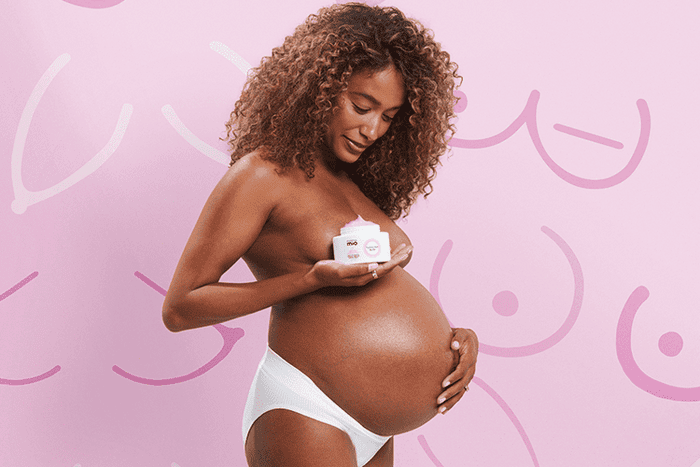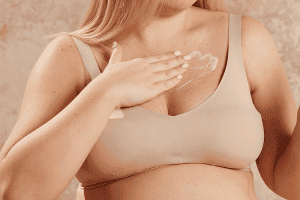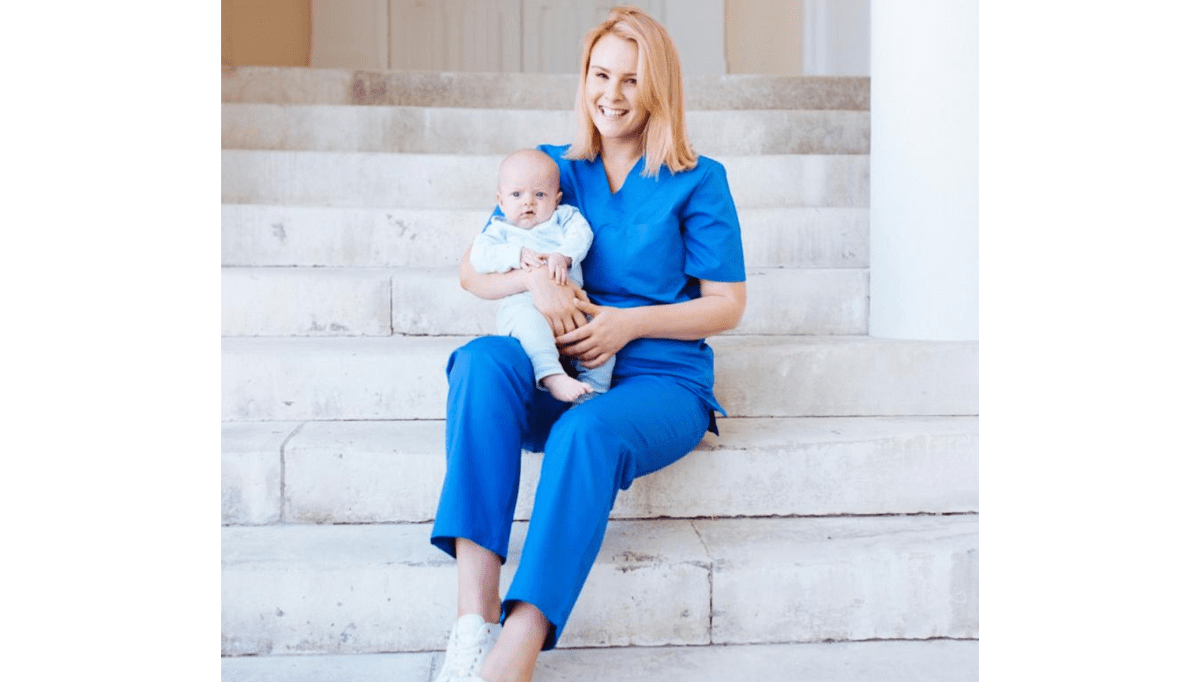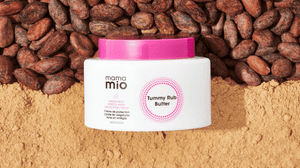October is Breast Cancer Awareness Month, and it’s more important than ever to be mindful and vigilant of all the signs you need to look out for, especially with a baby on board! I’m Midwife Vic, Mama Mio’s resident midwife – let's talk about all things checking your boobs!
What should you look out for when checking your boobs?
Cancer research does a fantastic job of taking us through some of the signs and symptoms that we should keep an eye out for when checking our boobs regularly. These include:
- A new lump or thickening in your breast or armpit
- A change in size, shape or feel of your breast
- Skin changes in the breast such as puckering, dimpling, a rash or redness of the skin
- Fluid leaking from the nipple in a woman who isn’t pregnant or breast feeding
- Changes in the position of the nipple
But how do we manage signs and symptoms alongside the huge breast changes that women experience during pregnancy and during the postnatal period?
By knowing what’s normal!

Common Changes with Breasts when Pregnant
If you have been following the guidelines of checking your boobs, you may already have noticed that breasts when pregnant tend to change in size and shape. This is because they are get ready to make colostrum and latterly milk for your baby. Your nipples and areola – the circular coloured part around your nipple, will change texture, becoming more raised and bit tougher, as well as darken. They may also increase in size during pregnancy as well.
You may notice the production of a clear or yellowy fluid from your nipple. This is called colostrum which is the first food source that your baby will have if you’re breastfeeding until your baby is around 3 days old.
Your breasts when pregnant will feel heavier, but you shouldn’t notice any big lumps. They tend to come a little later once your baby is born if you are suffering with engorgement.
Be sure to swap to a maternity bra that is supportive and most importantly not wired. The wire in a bra can cause milk ducts to become blocked and contribute towards engorgement. It’s rare in pregnancy but it can be because of a poor fitting bra.

Changes with Breasts During the Postnatal Period
On average it takes around 3 days for your milk to ‘come in’. Everyone is different of course, with some a little sooner or later. When your baby is first born, your breasts will produce colostrum. Breasts work off a supply and demand mechanism. The more your baby feeds at the breast and extracts colostrum, or you express and extract the colostrum, the sooner the milk is encouraged to come in.
When your breasts transition from colostrum to milk they will become very heavy, much larger, and sometimes red and lumpy from blocked milk ducts. These ducts become blocked if you are unable to get the milk out of the breast from poor latch or a lack of expressing. It needs to come out though, as stagnant milk, and blocked ducts can lead to an infection called mastitis.
Make sure to check your latch, or using the expressing technique with a midwife, massage into any lumps in the breast as you’re feeding/expressing and use heat to open up any stubborn ducts, using cloths or a hot water bottle.

Once you understand what is normal, you can start identifying anything that sits outside of this. If at any point in pregnancy or in the postnatal period, you feel there has been an abnormal breast or nipple change, or you’re concerned and want to talk it through with someone, your midwife is a great place to start.
We are experts in what is normal, and anything that we consider to be abnormal will immediately prompt a referral to a specialist that can help.
Be breast aware. Learn what should feel normal when checking your boobs, and check regularly. Never sit at home worrying, especially when you have access to your midwife or GP (who will be more than happy to help)!
Want to know more on how Mama Mio is supporting Breast Cancer Awareness Month? Read our blog, here!








